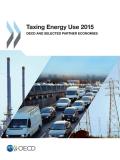This book identifies the drivers and success factors of green industrial policy, which seeks to reconcile the synergies and trade-offs which exist between economic and environmental goals. Greening the economy is a goal which will require enormous investment. As markets are currently failing to provide the required incentives for environmental sustainability, governments must intervene and provide ‘policy rents’ for investments in sustainability while withdrawing rents from polluting investments. In this they will face the risk of political capture by interest groups and difficult choices among technologies. Rent management is therefore the heart of green industrial policy and the focus of this book. On top of this, the country examples provided in this volume focus on the emerging powers, which will have an important influence on the future of our planet.
This paper explores innovation in wind energy in Denmark and Germany. It examines the key features and similarities of, and differences in each country’s technological and organizational innovation paths and sheds light on their main determinants. It finds that common features have roots in similar social and political priorities and decisions at the national level. The differences, on the other hand, tend to have roots in geographical conditions and company-level technology choices.
In the end, the paper briefly addresses the increasing global interconnectedness of wind technology markets and the role of emerging new players, such as China and India.
This report serves as a starting point to address the calls from Rio+20 and the United Nations Environment Programme Governing Council to share the South’s various experiences and national-level initiatives for transitioning to sustainable and socially inclusive economies. Four unique national initiatives – all taking place in countries in the South, and at different stages of implementation - are highlighted: Ecological Civilization in China, Sufficiency Economy in Thailand, Green Economy in South Africa, and Living Well in Bolivia.
By emphasizing their common economic, environmental and social aspirations, as well as challenges and available resources, this report aims to benefit countries by sharing experiences that they may find relevant to their own particular challenges. In addition to providing concrete examples, such exchanges can empower countries to share and learn from home-grown responses to sustainable development challenges. In this report, sub-sections describing four national sustainable development approaches are drawn from contributions from the four project countries themselves.
The main focus of this paper is on the assessment of the challenges and trade-offs faced by the three major national development banks (NDBs) in emerging economies in their efforts to (1) reach the goals set by their governments, (2) obtain the resources needed to function at a meaningful scale, and (3) operate within their unique economic and political contexts.
Followed by the first introductory section, the second section provides the overview of three NDBs. And the next section is primarily focused on the viability of the three NDBs to supply a significant share of financing for infrastructure investments in developing and emerging economies, supporting economic growth and improved living standards. The comparison of the CDB, DBSA, and BNDES indicates that NDBs have a significant role to play in this task and gain numerous important advantages. However, it is also clear that their role is inherently limited in nature. The final section of this paper draws some tentative conclusions and lessons regarding the role of NDBs in providing infrastructure finance.

Energy is a critical input into the production and consumption patterns that support economic and social wellbeing. However, many forms of energy use contribute to the environmental and climate challenges societies face today. Taxation is a key tool by which governments can influence energy use to contain its environmental impacts. This report provides a systematic analysis of the structure and level of energy taxes in OECD and selected other countries; together, they cover 80% of global energy use.
This report builds on the 2013 edition of Taxing Energy Use, expanding the geographic coverage of the 2013 data set to include Argentina, Brazil, China, India, Indonesia, Russia and South Africa. The report describes energy use, taxation and pricing in these countries and presents detailed graphical profiles of the structure of energy use and taxation for each.
